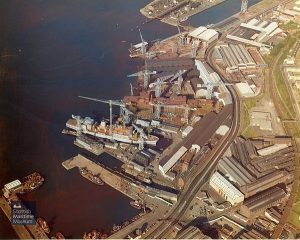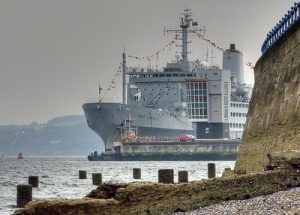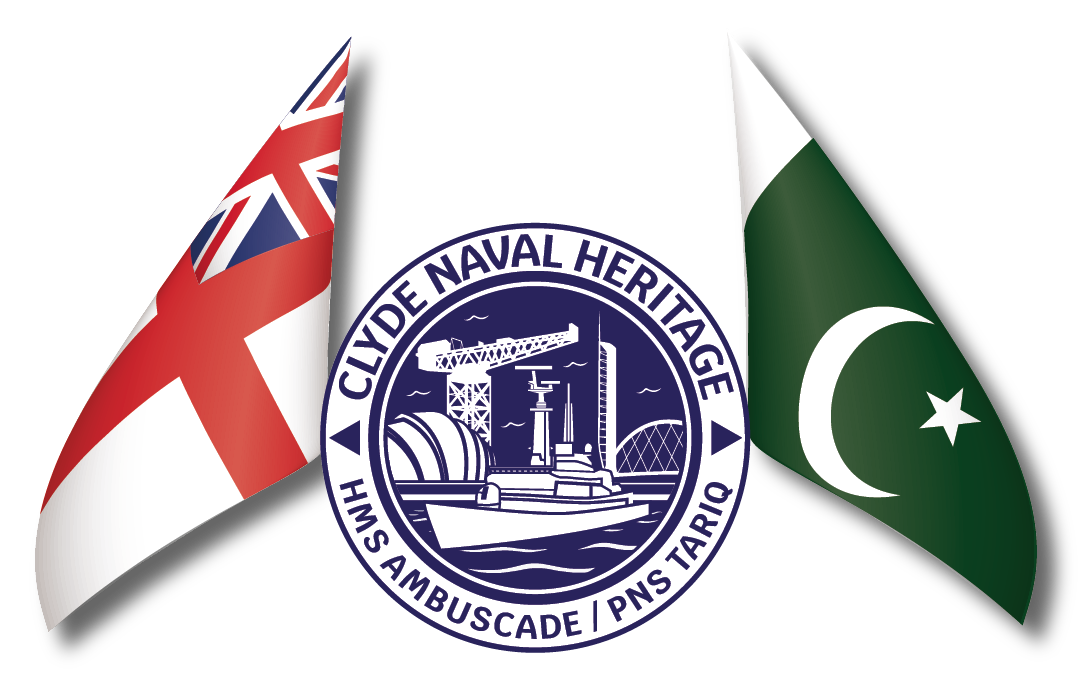Lithgows Ltd was one of the most significant shipbuilding companies in Scotland, playing a crucial role in the maritime and industrial history of the Clyde shipbuilding region. Founded in the 19th century and continuing to operate into the late 20th century, Lithgows Ltd was a family-run business that became one of the largest private shipbuilding companies in the world.
Founding and Early Years (1874–1900)
The Lithgow family’s involvement in shipbuilding dates back to the early 19th century, but Lithgows Ltd, as it became known, was officially founded in 1874. The company was established by Joseph Lithgow and his sons, William and James Lithgow, in Port Glasgow on the lower River Clyde, a region already famous for shipbuilding.
Early Operations: Lithgows initially focused on building small sailing ships and wooden vessels. However, the company quickly expanded its operations to construct larger ships, adapting to the growing demand for steam-powered ships during the latter half of the 19th century.
Strategic Position: Located in Port Glasgow, Lithgows benefitted from its proximity to Glasgow, a major industrial hub, and the River Clyde, one of the world’s busiest waterways. This made it easy to source materials and ship the vessels they built.
Transition to Iron and Steel Ships: By the late 1800s, Lithgows had transitioned from wooden ships to building ships made from iron and later steel. This shift marked an important turning point, aligning Lithgows with the growing trend of metal-hulled steamships that dominated global maritime trade.

Expansion and Growth (1900–1930)
At the turn of the 20th century, Lithgows Ltd began a period of rapid expansion, both in terms of the size of their operations and the types of ships they built.
Diversification of Shipbuilding: By this time, Lithgows had started to build a wide range of ships, including tankers, cargo vessels, passenger liners, and naval vessels. The company was involved in major contracts, particularly during World War I, when it built ships for the British government’s war effort.
Acquisition of Russell & Co: In 1910, Lithgows Ltd acquired Russell & Co, another shipyard in Port Glasgow. This move significantly increased their production capacity, making them one of the largest shipbuilders on the Clyde.
Family Leadership: William Lithgow (1868–1952) and his brother James Lithgow (1883–1952), grandsons of the founders, were instrumental in this era of growth. James Lithgow, in particular, was a key figure in the Scottish shipbuilding industry and later became chairman of the Shipbuilding Conference. Under their leadership, Lithgows became a formidable force in the global shipbuilding industry.
The Interwar Period and World War II (1930–1945)
The interwar years were challenging for many shipbuilders due to the global economic downturn and decreased demand for new ships. However, Lithgows managed to remain competitive through innovation and government contracts.
Adaptation to Economic Challenges: During the Great Depression, Lithgows kept its shipyard operating by securing various contracts for smaller ships and upgrading its facilities to maintain competitiveness.
World War II Efforts: Lithgows was heavily involved in the war effort during World War II, producing naval destroyers, aircraft carriers, and cargo ships for the Royal Navy. By this point, Lithgows had firmly established itself as one of the leading shipbuilders in the UK.
Technological Advances: The company also incorporated technological innovations in ship design and construction, further enhancing its reputation for building reliable and advanced ships.

Post-War Era and Peak Production (1945–1960)
Following World War II, Lithgows Ltd entered a period of peak production. The post-war economic boom, coupled with increased demand for new ships, particularly in the merchant shipping sector, allowed the company to grow further.
Post-War Reconstruction: Lithgows played an important role in rebuilding the UK’s merchant fleet, which had suffered heavy losses during the war. The company built hundreds of ships in the 1950s, including oil tankers, bulk carriers, and passenger liners.
Innovation in Ship Design: By the mid-20th century, Lithgows had become known for its innovation in ship design, incorporating features such as advanced propulsion systems, improved cargo handling, and better navigational equipment. This helped the company maintain its competitive edge.
Peak Production: In the 1950s, Lithgows was producing as many as 30 ships per year and employed more than 12,000 workers. The company was responsible for a significant proportion of the UK’s merchant shipping tonnage during this period, making it one of the largest private shipbuilding companies in the world.

Challenges and Decline (1960–1980)
Despite its earlier successes, Lithgows Ltd began to face serious challenges in the 1960s and 1970s as the global shipbuilding industry underwent significant changes.
Increased Competition: Global competition, particularly from shipbuilders in Japan and South Korea, began to erode Lithgows’ dominance. These countries had access to cheaper labour and more modern facilities, allowing them to undercut traditional European shipbuilders.
Technological Changes: The rise of containerization and the development of larger, more efficient ships posed further challenges. While Lithgows had been innovative in earlier decades, the company struggled to adapt to these new technologies as quickly as its global competitors.
Nationalization of the Industry: By the late 1960s, the UK shipbuilding industry as a whole was in decline. In 1977, the British government nationalized many of the country’s shipyards, including Lithgows, as part of British Shipbuilders, a state-owned corporation created to manage and streamline the industry.
The Final Years and Legacy (1980–1990)
Lithgows Ltd ceased large-scale shipbuilding operations by the early 1980s, marking the end of an era for the company and for shipbuilding on the Clyde.
Decline in Orders: The reduction in global demand for ships, coupled with rising costs and increased competition, made it difficult for Lithgows to remain profitable. Although the company continued to operate on a smaller scale, it never regained its former dominance.
Closure and Diversification: In the early 1980s, the shipyard in Port Glasgow was closed, and Lithgows diversified into other industries, including property development and engineering. While the company retained its name, it effectively exited the shipbuilding industry.
Legacy in Shipbuilding: Lithgows Ltd left a lasting legacy on Scottish and British shipbuilding. At its height, it was a symbol of the Clyde’s shipbuilding prowess and contributed significantly to the UK’s naval and merchant fleets. Even after its closure, the shipyards in Port Glasgow continued to be a reminder of the region’s industrial heritage.

